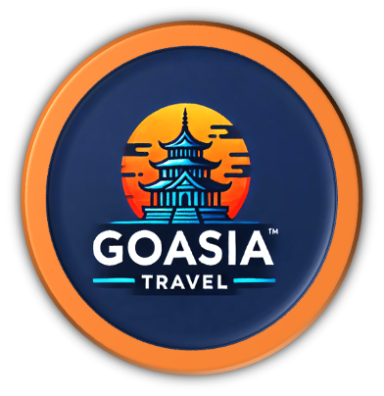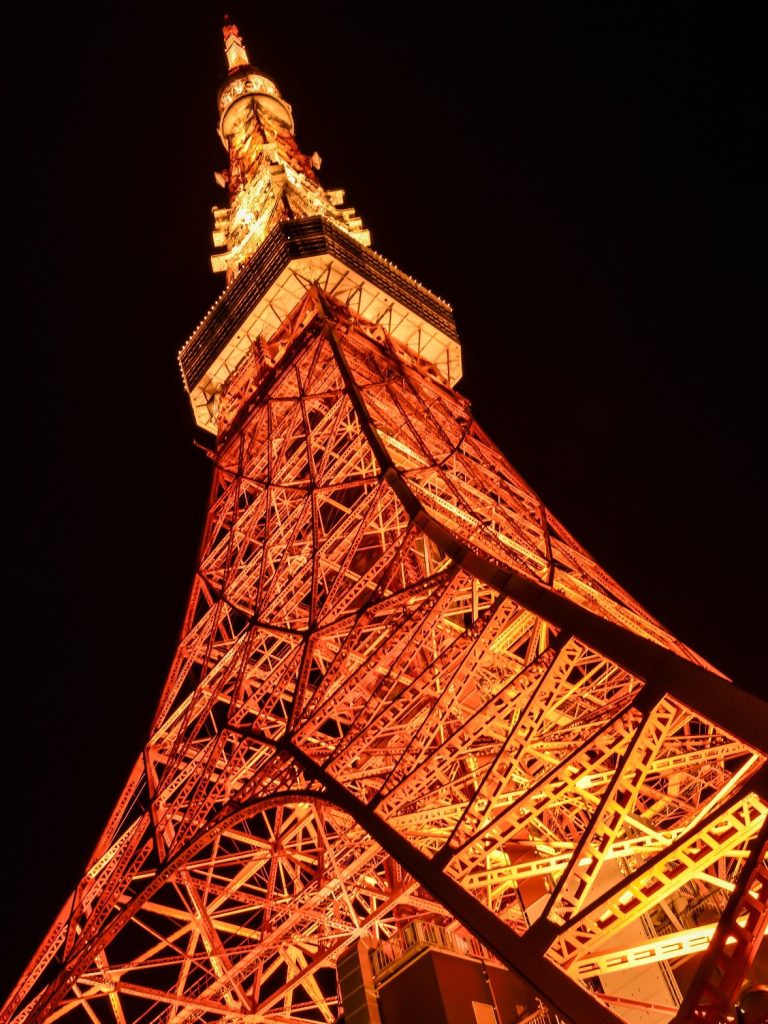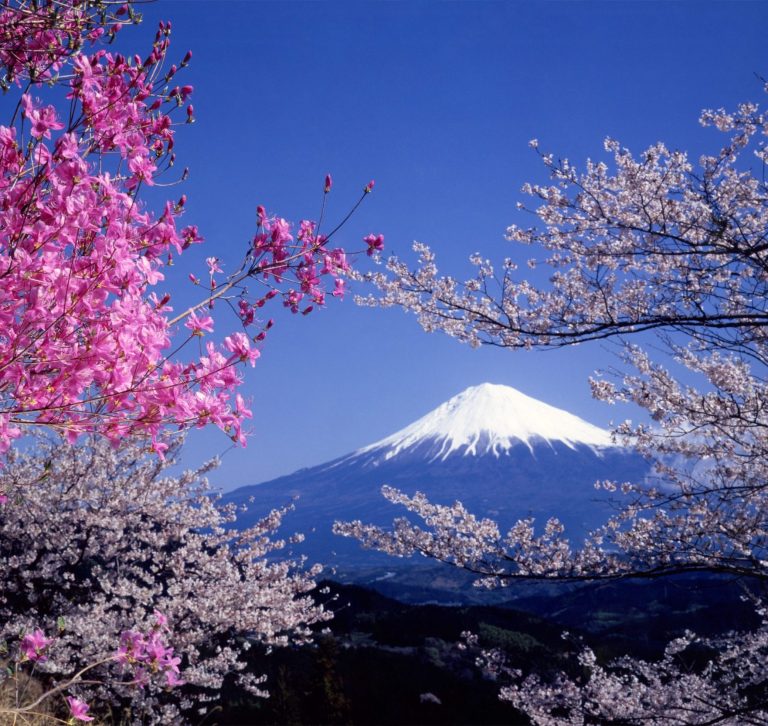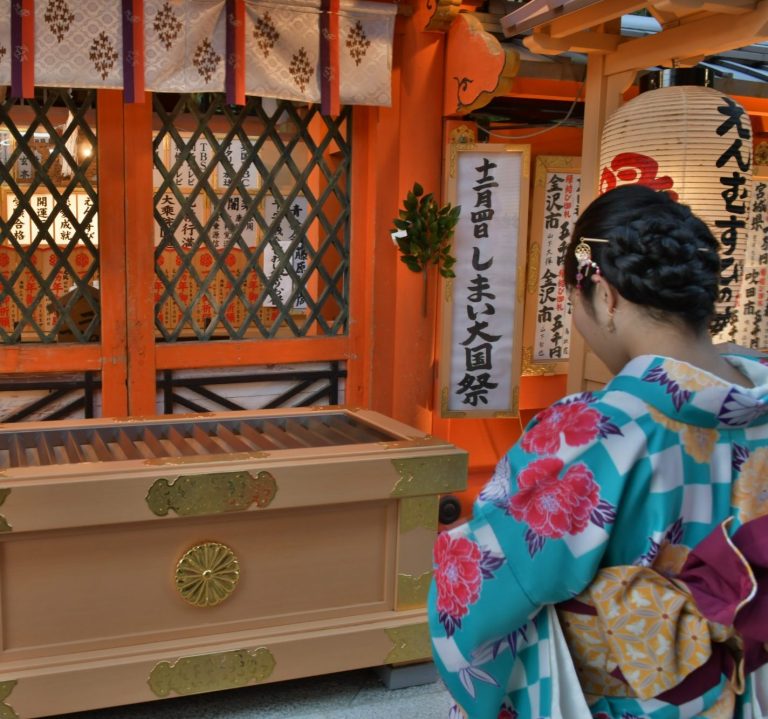Deep Japan
14 Days/ 13 Nights
Overview
Venture off the well-trodden path to discover some of Japan’s wildest regions and most beautifully preserved cultural traditions. This itinerary takes you deep into the heart of the country, following in the footsteps of pilgrims and travelers along the historic Nakasendo Way. Explore the ancient secrets and steep stairs of Matsumoto Castle, relax in the charming mountain town of Yudanaka Onsen, and pay a visit to the famous snow monkeys.
You'll also witness the breathtaking views of Mt. Fuji reflected in the tranquil waters of Lake Kawaguchi. Step into a traditional fishing village for a glimpse of a vanishing way of life—one that has slowly given way to modernity and convenience. This journey unveils hidden gems of Japan that remain untouched and rarely seen by most visitors.
Tour at a Glance
Day 1 Tokyo
Day 2 Tokyo
Day 3 Kawaguchiko
Day 4 Tokyo / Kiso Fukushima
Day 5 Nakasendo Way
Day 6 Kiso-Fukushima / Matsumoto
Day 7 Matsumoto / Yudanaka Onsen
Day 8 Yudanaka Onsen
Day 9 Yudanaka Onsen / Kanazawa
Day 10 Kanazawa
Day 11 Kanazawa / Kyoto
Day 12 Kyoto
Day 13 Kyoto
Day 14 Depart
Detailed Itinerary
Day 1: Arrival in Tokyo
Tokyo is a city of contrasts. This front-line capital famous for its pioneering modernity, iconic landscapes of neon and soaring skyscrapers is dotted with peaceful parklands, shrines, temples, and adored gardens. Despite its mania for anime pop culture, fashion, digital trends and discernible consumption, the city embraces an ancient heritage evident in the temples and shrines scattered amongst the vast skyrises. The Imperial Palace provides a palpable link to the city’s incredible heritage even with the explosion of commercial emporia. Free from the shopping and entertainment districts, historic wooden house, private bonsai gardens and the calming Zen atmosphere of the Hamarikyu Gardens thrive to allow visitors an escape from the hyperactivity of the lively streets. Even with the city’s costly reputation visitors can take advantage of the inexpensive izakaya bars and neighbourhood cafes serving delectable noodle and rice dishes. In fact, many of Tokyo’s charms can be enjoyed free of charge; stroll hrough Asakusa and the Buddhist temple Sensoji, the fashion Mecca of Harajuku, the world’s largest fish market at Tsukiji, or the neon-imbued atmosphere of Shinjuku and be enveloped by Japan’s largest city.
On your arrival at Narita Airport, you will be met by an assistant at the arrival lobby for your shared transfer to your hotel in Tokyo.
Option: Upgrade to Private Airport Transfer
You will have the rest of the day to spend at your leisure after check-in.
Option: Mobile Internet SIM card
Stay connected while in Japan with a SIM card to use on your unlocked smartphone or tablet! The SIM will allow you to connect your device to mobile internet with up to 2GB data traffic. Please let us know your device brand and model at the time of booking.
Meals included: None
Guiding: Meet and greet only
Accommodation: Standard Grade Hotel: Shiba Park Hotel
Superior Grade Hotel: Park Hotel Tokyo
Day 2: Tokyo Exploration
Take a day tour of this fascinating city with a local guide. First up is Asakusa, Tokyo’s old town where you can soak in the atmosphere of the Tokyo of old. Visit Sensoji, Tokyo’s oldest temple and wander down Nakamise, a shopping street that has been providing temple visitors with a variety of traditional, local snacks and tourist souvenirs for centuries. Next, travel down the Sumidagawa River on Tokyo's Water Bus, a unique means of transportation. You'll arrive directly at Hamarikyu garden, an Edo Period Japanese garden surrounded by the Shiodome district’s futuristic skyscrapers, a great example of how Japan is the land of contrasts, where you will stop for a cup of steaming matcha and Japanese sweets in a tea house on a small island in the park’s lake.
After lunch, enjoy a visit to Meiji Shrine, a shrine dedicated to the deified spirit of Emperor Meiji and a popular place for traditional Japanese weddings. Finally, as the sunlight dims, take a walk down the sparkly Omotesando shopping street, a broad tree lined avenue home to the flagship stores of the world’s top fashion brands and some fantastic modern architecture.
Optional tour upgrade for tour by private car.
Meals included: Breakfast, tea, and sweets
Guiding: 8 hours
Accommodation: Standard Grade Hotel: Shiba Park Hotel
Superior Grade Hotel: Park Hotel Tokyo
Day 3: Kawaguchiko
Explore part of the Fuji National Park by private car with guide.
Today you will visit the beautiful lakeside town of Kawaguchiko, known for its panoramic views of Mt. Fuji and the mountain's symmetrical reflection in the lake. First stop will be a visit to the lakeside for a journey up the Kachi Kachi ropeway on Mt. Tenjo, allowing you wonderful views across Lake Kawaguchi and of Mt. Fuji, if the weather is fair. After descending, you'll head to Arakura Sengen Shrine, home to the spectacular Chureito Pagoda, a tall vermillion spire against a backdrop of Mt. Fuji, often used in promotional images for Japan.
You'll enjoy lunch afterwards before you head to the Kubota Itchiku Art Museum. The man after whom the museum is named is renowed for the revival of Tsujigahana silk-dyeing, thought to be a lost art. Here, you will see many intricate works of art on beautiful silken kimonos. (Please note that if the Kubota Itchiku Art Museum is closed, you will visit the Kawaguchiko Music Forest instead).
The final stop on today's tour is a visit to Mt. Fuji's 5th station, where the road runs out on the mountain itself. The views looking down below are quite astounding and you will begin to understand why Japan's tallest mountain is so very revered.
Throughout the day you will have the chance to get a glimpse of Mt Fuji, however please keep in mind that she is a notoriously shy mountain and it needs to be a clear day.
Meals included: Breakfast
Guiding: 8 hours
Accommodation: Standard Grade Hotel: Shiba Park Hotel
Superior Grade Hotel: Park Hotel Tokyo
Day 4: Tokyo – Kiso Fukushima
Today you will leave the bustling capital behind and will make your way to Kiso-Fukushima, the gateway to the Nakasendo Way.
Make your own way to Tokyo station, where you can use your JR Pass (included) for your journey to Kiso-Fukushima. You will take the Shinkansen to Nagano, where you will change to a limited express train for Kiso-Fukushima. Journey time is around 3.5 hours total.
The Kiso Valley is in Nagano Prefecture and runs alongside the mountains of the Central Alps. An ancient 70-km trade route called the Kisoji was developed along the valley and served as a very important means of commerce in the area.
The Kisoji became even more important from the beginning of the Edo Period, when it was amalgamated with other routes in the formation of the 500-km-long Nakasendo. The Nakasendo ("path through mountains") was one of the two means of transportation between Edo and Kyoto. It contrasted with the other principal transportation route of the time, the Tokaido, which ran along the seashore. Because of restrictions by the shogunate, travellers were almost always forced to make their trips on foot. As a result, "post towns" developed every few kilometres to provide travellers with places to rest, eat, and find nightly accommodation during their arduous journey. Along the Kiso Valley, a few post towns, particularly Magome, Tsumago and Narai, have been preserved to look as they did when they served travellers of the Nakasendo. Visitors can enjoy the stone paths and wooden buildings of a bygone era.
Upon arrival at Kiso-Fukushima, make your own way to your hotel (it is a 5-minute taxi ride or an easy 15-minute walk).
In the afternoon you’ll be able to use the included combined entry ticket to visit three beautiful sights in Kiso-Fukushima at your leisure. You’ll first visit the Yamamura Residence, former home of the Owari clan’s leader Yamamura and overseer of the Kiso-Fukushima area. Today, his house is an interesting museum chronicling upper class life in Kiso-Fukushima in the past. Next, you’ll visit the lovely Ko zenji Temple, home to Asia’s largest dry rock garden. Its beauty rivals even that of some of the dry rock gardens found across Kyoto. Finally, you’ll head to the Fukushima Sekisho-Ato, a 270-year-old immigration office.
A delicious dinner is included at your ryokan tonight.
Meals included: Breakfast & Dinner
Guiding: None
Accommodation: Standard Grade Hotel: Onyado Tsutaya
Superior Grade Hotel: Urara Tsutaya
Day 5: Nakasendo Way
This morning please make your own way to Kiso-Fukushima station and use your Japan Rail Pass to take a short limited express train to the town of Nakatsugawa, from where you can pick up the bus to Magome, a former post town with buildings faithfully reconstructed in a traditional style. You’ll have a little time to explore the town and enjoy some lunch here before the main event—the Nakasendo Way.
You’ll be walking an 8 km stretch from Mago me to Tsumago today. The trail is a little steep at first, but it evens out quickly and the rest slopes away gently down to Tsumago. There are plenty of rest stops and toilets along the way (some even with free WIFI!) As you make your way through the forest, you’ll be treated to cascading waterfalls and beautiful mountain vistas peeking through the trees.
At the end of the walk, your reward is the picture-perfect town of Tsumago. Unlike Magome, the houses here are all over 200 years old and still house many residents to this day. Enjoy the feeling of stepping back in time as you explore this pretty town.
At 4pm, a private transfer will be waiting to drive you directly back to Kiso-Fukushima, a journey which takes just under an hour. Another delicious Japanese-style dinner is included at your ryokan tonight.
Notes: While the Nakasendo is not a full hike nor a particularly challenging walk, a moderate-to-good level of fitness is required. Please, wear sensible shoes and prepare rain gear.
Meals included: Breakfast & Dinner
Guiding: None
Accommodation: Standard Grade Hotel: Onyado Tsutaya
Superior Grade Hotel: Urara Tsutaya
Day 6: Kiso-Fukushima – Matsumoto
Today you will head to Matsumoto, a lovely castle town nestled in the Japan Alps. Please make your own way to Kiso-Fukushima station and use your Japan Rail Pass to board a limited express train directly to Matsumoto. Journey time is just over 30 minutes.
Located 3 hours from Tokyo, Matsumoto has flourished as a castle town since the 16th century. In addition to its historical and cultural heritage, Matsumoto is surrounded by mountains and is acclaimed for its beautiful views. Hiking and climbing locations in the mountains are easily accessible by public transportation. To the west the Japan Alps rise to heights of 3,000 meters and are known as "The Roof of Japan".
Upon arrival in Matsumoto, please make your own way to your accommodation. The rest of the day is at your leisure, but we highly recommend you take the time to visit Matsumoto Castle, one of the few remaining original castles in Japan (in that it has not been reconstructed, rebuilt, or had major renovations since its initial construction).
Tip: Luggage Forwarding
You will need to take some connecting trains tomorrow to reach Yudanaka Onsen and then quite possibly a bus or shuttle to reach your accommodation. Large luggage may be an inconvenience to you, so we recommend that you forward it to your Kanazawa accommodation tomorrow morning. Your hotel front desk will be able to assist you with this—simply let them know you wish to forward your luggage and the address of your Kanazawa Hotel, and they will fill out the paperwork. A local fee of about 2000 yen per suitcase is payable on the day.
Meals included: Breakfast
Guiding: None
Accommodation: Standard Grade Hotel: Matsumoto Hotel Kagetsu
Superior Grade Hotel: Buena Vista Hotel Matsumoto
Day 7: Matsumoto – Yudanaka Onsen
Today you will head deeper into the alps to Yudanaka Onsen. Please make your own way to Matsumoto Station and use the Japan Rail Pass to pick up a limited express directly to Nagano. Journey time is about an hour.
You may wish to do a bit of self-guided sightseeing before proceeding to Yudanaka Onsen. If so, we recommend checking out Zenkoji Temple in town, one of the most important Zen Buddhist temples in Japan. The street approaching the temple is also lined with many local speciality snacks and we would encourage you to save them for your train journey.
When you’ve had your fill of culture, use the Nagaden Free Ticket included to catch a Nagano Electric Railway limited express from Nagano to Yudanaka. The journey is just shy of an hour.
Yudanaka Onsen has a long history as a hot spring resort, dating back hundreds of years. Although it has seen development in recent years, it still retains its traditional atmosphere. Right inside the station is the Kaede no Yu public bath, allowing visitors to start enjoying the area's hot spring water immediately upon arrival. There is a free footbath located just outside the station for travelers not quite ready to completely submerge in the water.
Yudanaka is also well known for being the starting point for a visit to the Jigokudani Monkey Park, home to Japan’s famous Snow Monkeys, who bathe in the park's natural hot springs. Jigokudani literally means ‘hell’s valley’ due to the steam and boiling water that bubbles out of small crevices in the frozen ground, and it is in the baths of this boiling water that the resident Japanese Macaques like to soak in on. The monkeys live in large social groups, and it can be quite entertaining to watch their interactions. Accustomed to humans, they can be observed from very close and almost completely ignore their human guests.
Upon arrival at Yudanaka Onsen, please make your own way to your accommodation (if you let us know well in advance which train you intend to catch, we will inform your ryokan and you will be able to use their complimentary shuttle, if available). The rest of the evening is at your leisure, and we would suggest that you take advantage of the warm hot spring baths at your ryokan for a good soak! But don’t get too carried away in the bath, for a delicious Japanese dinner is included this evening.
Meals included: Breakfast & Dinner
Guiding: None
Accommodation: Standard Grade Hotel: Biyu no Yado
Superior Grade Hotel: Kokuya*
*Kokuya has a minimum room allocation of 2 pax, so single pax will stay at Biyu no Yado in a deluxe Japanese room (with outdoor hot spring bath).
Day 8: Yudanaka Onsen
Your day is at leisure today, so why not use the opportunity to head to Jigokudani Yaen Koen and visit the famous Snow Monkeys?
Jigokudani literally means ‘hell’s valley’ due to the steam and boiling water that bubbles out of small crevices in the frozen ground, and it is in the baths of this boiling water that the resident Japanese Macaques like to soak in on. The monkeys live in large social groups, and it can be quite entertaining to watch their interactions. Accustomed to humans, they can be observed from very close and almost completely ignore their human guests. Whilst the monkeys are most numerous during the colder months, they can be observed all year round.
Note: the entrance to the park is located a 30/40-minute hike away from the closest point reachable by bus. The hike is very leisurely and scenic, with moderate slopes, but still not recommended for travellers with mobility issues. Please ensure you have sensible footwear, especially in winter, as the path can be slippery in the snow and rain.
After visiting the monkey park, feel free to take a dip in the town’s relaxing onsen baths or you may want to take advantage of your Nagaden Free Ticket and take the chance to visit the nearby town of Obuse, famous for chestnuts and sake! Obuse also has a wonderful “Open Garden” initiative, whereby visitors to the town can explore locals’ gardens.
Another amazing dinner will be served at your ryokan tonight, so be sure to head home with plenty of time to spare.
Meals included: Breakfast& Dinner
Guiding: None
Accommodation: Standard Grade Hotel: Biyu no Yado
Superior Grade Hotel: Kokuya*
*Kokuya has a minimum room allocation of 2 pax, so single pax will stay at Biyu no Yado in a deluxe Japanese room (with outdoor hot spring bath).
Day 9: Yudanaka Onsen Kanazawa
Today you will head to Kanazawa, famed for its stunning gardens and well-preserved old town district. Make your own way to Yudanaka Station and use the included Nagaden limited express ticket to take the train back to Nagano (Japan Rail Pass not valid on this line). Upon arrival in Nagano, you can use your Japan Rail Pass to pick up the Shinkansen directly to Kanazawa. Total journey time is around 2 – 3 hours depending on which Shinkansen you take.
During the Edo Period, Kanazawa served as the seat of the Maeda Clan, the second most powerful feudal clan after the Tokugawa in terms of rice production and fief size. Accordingly, Kanazawa grew to become a town of great cultural achievements, rivalling Kyoto and Edo (Tokyo). During World War II, Kanazawa was Japan's second largest city (after Kyoto) to escape destruction by air raids. Consequently, parts of the old castle town, such as the Nagamachi samurai district and chaya entertainment districts, have survived in good condition. Today, Kanazawa remains an important city in its region and serves as the capital of Ishikawa Prefecture. The city boasts many historical attractions such as restored residences and districts, as well as modern museums. But Kanazawa's unchallenged main attraction is Kenrokuen, one of Japan's "three best landscape gardens".
Upon arrival in Kanazawa, please make your own way to your accommodation. The rest of the day is at your leisure.
Meals included: Breakfast
Guiding: None
Accommodation: Standard Grade Hotel: Vista Hotel Kanazawa*
Superior Grade Hotel: Tokyu Hotel Kanazawa
*Triple rooms unavailable at the Vista Hotel Kanazawa, groups of 3 will be split across a twin and a single.
Day 10: Kanazawa
During the Edo Period, Kanazawa served as the seat of the Maeda Clan, the second most powerful feudal clan; Kanazawa grew to become a town of great cultural achievements, rivaling Kyoto and Edo (Tokyo). During World War Two, Kanazawa was Japan's second largest city (after Kyoto) to escape destruction by air raids. Consequently, parts of the old castle town, such as the Nagamachi samurai district and chaya entertainment districts, have survived. Today, the city boasts many historical attractions such as restored residences and districts, as well as modern museums.
A full day to explore Kanazawa with a local guide. The highlight of any visit to Kanazawa is Kenroku-en garden. Ranked one of the top three in Japan, its breathtaking beauty shines through in any season. You will also be visiting the imposing Kanazawa castle, located next to the garden. Nearby Kagayuzen Kaikan offers demonstrations of the centuries old Yuzen silk painting technique.
Head to visit the Nagamachi Samurai district, where you can enter the Nomura Samurai House, a traditional Japanese home with tea-ceremony room, an interior courtyard garden and artifacts from the Edo period. The Higashi Chaya District is the largest and by far the most interesting of Kanazawa’s Geisha Districts. Many of the buildings along the central street now house cafes and shops. One of the shops, Hakuza, sells gold leaf products, a specialty of Kanazawa, and displays a kura warehouse style room which is completely covered in gold leaf; you will also have a chance to visit the Shima teahouse, which is still an operating tea house, but opens its doors to the public. You can enjoy a cup of green tea here to finish the day.
Optional tour upgrade for tour by private car
Meals included: Breakfast, tea & sweets
Guiding: 8 hours
Accommodation: Standard Grade Hotel: Vista Hotel Kanazawa*
Superior Grade Hotel: Tokyu Hotel Kanazawa
*Triple rooms unavailable at the Vista Hotel Kanazawa, groups of 3 will be split across a twin and a single.
Day 11: Kanazawa – Kyoto
Today you will move on to Kyoto, the cultural heart of Japan. Please make your own way to Kanazawa Station and use your Japan Rail Pass to board a limited express train directly to Kyoto. Journey time is just over 2 hours.
This is a must-see destination in Japan. Kyoto is the nation’s former capital and was the residence of the emperor from 794 until 1868. With 2,000 religious’ buildings, including 1,600 Buddhist temples and 400 Shinto shrines, as well as palaces, gardens, and associated architecture, it is one of the best-preserved cities in Japan and has 17 UNESCO World Heritage sites. Kyoto represents the “Japan of old” and beyond the high-rise skyscrapers built as a monument to progress, the real monument to Japan’s historical and cultural past can be found in the city’s narrow alleyways where tea houses abound and kimono-clad geisha hurry from elegant function to function.
Once you arrive in Kyoto, please make your own way to your accommodation. Your day is at your leisure until a treat later this evening where you will join a group for a shared Kyoto-style kaiseki cuisine meal prepared with seasonal ingredients as you behold the traditional dances of a maiko (apprentice geisha). You may also take a commemorative photo with her! The maiko will then play traditional Japanese-style games with a few participants as part of the show. We will advise pick-up and drop off points for the shared meal at the time of booking.
Meals included: Breakfast, Dinner
Guiding: 3 hours (Maiko meal)
Accommodation: Standard Grade Hotel: Vista Premio Hotel Kyoto Kawaramachi
Superior Grade Hotel: Tokyu Hotel Kyoto
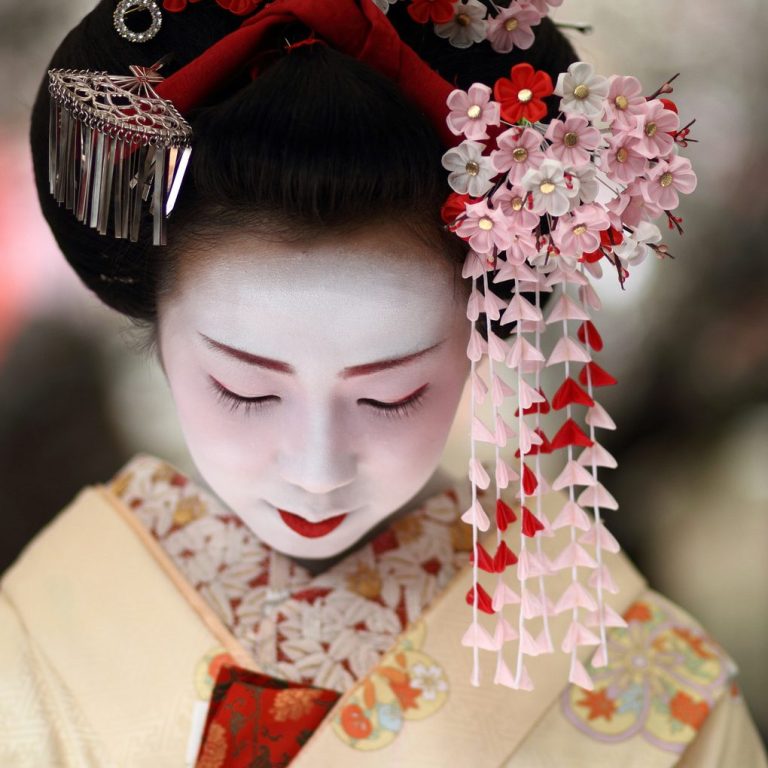

Day 12: Kyoto
Ryoanji Zen Temple is the site of Japan's most famous rock garden, which attracts hundreds of visitors every day. Originally an aristocrat's villa during the Heian Period, the site was converted into a Zen temple in 1450. The garden consists of a rectangular plot of pebbles surrounded by low earthen walls, with 15 rocks laid out in small groups on patches of moss. An interesting feature of the garden's design is that from any vantage point at least one of the rocks is always hidden from the viewer. The Kyoto Imperial Palace used to be the residence of Japan's Imperial Family until 1868, when the emperor and capital were moved from Kyoto to Tokyo. It is in the spacious Kyoto Imperial Garden, an attractive park in the centre of the city that also encompasses the Sento Imperial Palace and a few other attractions. You will visit the garden only (not the main palace).
In the afternoon, take a stroll along the Philosopher's Path, a pleasant stone path through the northern part of Kyoto's Higashiyama district. The path follows a canal which is lined by hundreds of cherry trees. Approximately two kilometres long, the path begins around Ginkakuji (Silver Pavilion) and ends in the neighbourhood of Nanzenji. The path gets its name due to Nishida Kitaro, one of Japan's most famous philosophers, who was said to practice meditation while walking this route on his daily commute to Kyoto University.
Optional tour upgrade for tour by private car
Meals included: Breakfast
Guiding: 8 hours
Accommodation: Standard Grade Hotel: Vista Premio Hotel Kyoto Kawaramachi
Superior Grade Hotel: Tokyu Hotel Kyoto
Day 13: Kyoto
Drive to the north of Kyoto Prefecture to discover quiet, quaint seaside villages whose charm is different from that of the ancient capital.
In a rustic area, Ine village, where Japanese fishermen still live out traditional lives in the present day, there are unique buildings called funaya, only found in this area in Japan. Funaya are houses built on the seafront whose lower floor is a boat garage and a workplace for the fishermen, while the families live on the upper floor. The people here live their lives in coexistence with the sea, with their main activities centered around fishing and farming. You will be able to enjoy an original Japanese landscape which has not been turned into a tourist attraction.
Upon arrival at the village, you will meet a local guide and explore the village via electric bicycle. Firstly, local people show you how to catch fish in traditional way. You will also have a chance to pick up one of those fishing nets set in the sea. Then visit a traditional funaya house and learn how people have lived here. A local boat will take you to the other side of the village, where you can stroll around the main street surrounded by funaya houses and have a short brake at Mukai sake brewery for sake tasting. Don’t miss the visit of the oldest house of Ine which dates back to Edo period. You can explore the village until departure by bicycle.
In the afternoon, you will be driven back to Kyoto.
Meals included: Breakfast, sake tasting
Guiding: 9 hours
Accommodation: Standard Grade Hotel: Vista Premio Hotel Kyoto Kawaramachi
Superior Grade Hotel: Tokyu Hotel Kyoto
Day 14: Departure
Your day is free until your scheduled shared transfer to Kansai International Airport in time for your return flight.
Option: Upgrade to Private Airport Transfer
If you are departing from Tokyo, you can use the Japan Rail Pass, which is still valid, to take the Shinkansen to Shinagawa Station and there pick up the Narita Express bound for Narita Airport. Please time your journey so that you can be at the airport at least 2 – 3 hours before your flight is due to depart.
Meals included: Breakfast
Guiding: None
Accommodation: None
PRICE: The price is subject to your travel dates and the number of people traveling. The itinerary can be customized according to your preferences. Contact us for detailed quotation!
We need your consent to load the translations
We use a third-party service to translate the website content that may collect data about your activity. Please review the details in the privacy policy and accept the service to view the translations.
